
How To: Make singular French nouns plural
Learn how to make singular French nouns into the plural by adding certain endings based on the root word, including "s," "eux," and "oux."


Learn how to make singular French nouns into the plural by adding certain endings based on the root word, including "s," "eux," and "oux."
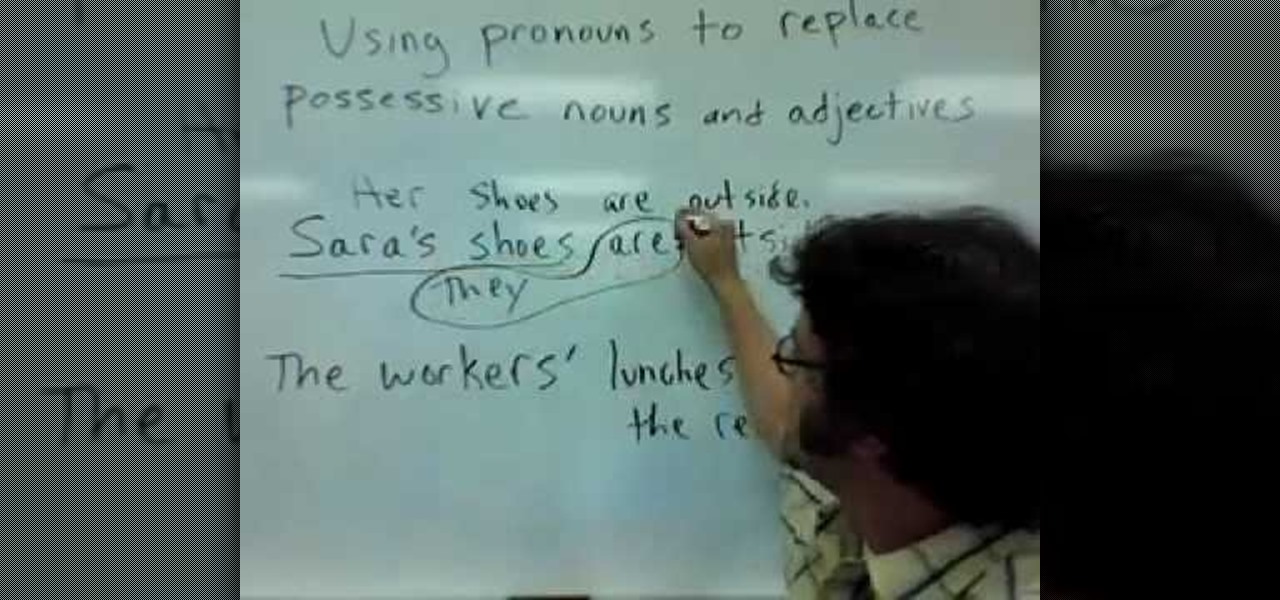
In this video, we learn how to replace possessive nouns and adjectives with pronouns. Using pronouns to replace possessive nouns and adjectives is simple, an example includes: Joe's car is dirty, would change to, his car is dirty, or it is dirty. Another example of this is "Sara's shoes are outside" would be "her shoes are outside", or "they are outside". "The workers' lunches are in the refrigerator", would be "their lunches are in the refrigerator", or "they are in the refrigerator". Practi...

In this video a teacher shows the difference between possessive adjectives and possessive pronouns.

In this video a teacher shows how to use possessive adjectives before a noun in English.
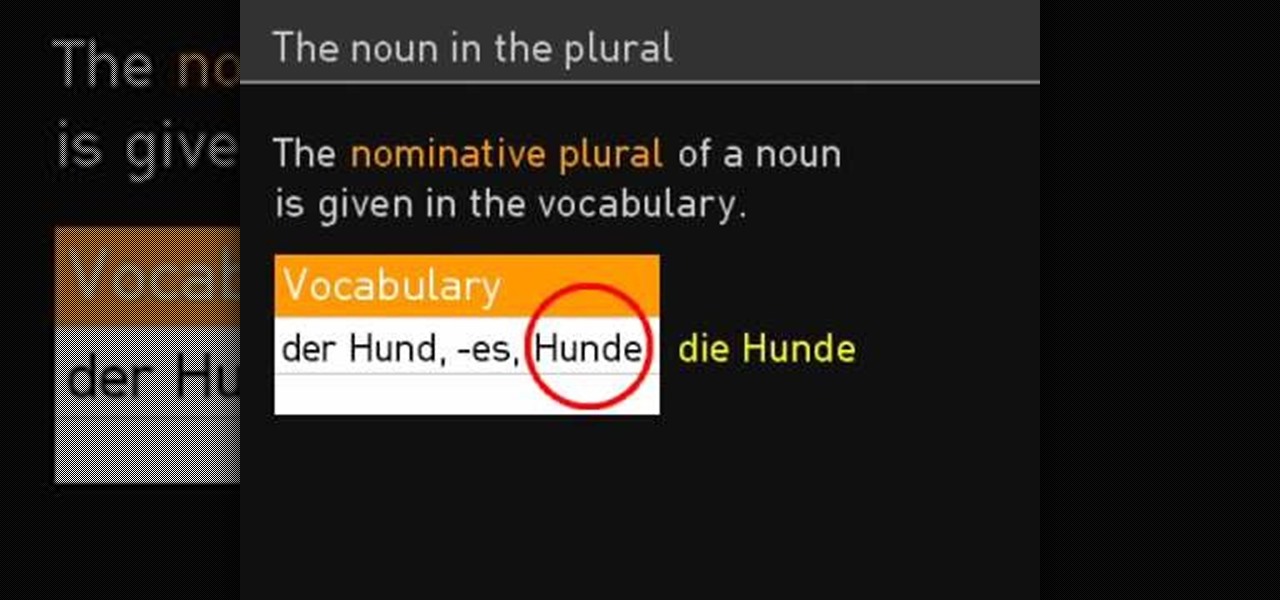
This video goes over the grammatically correct way to decline plural nouns in the nominative, genitive, dative and accusative tenses in German. You are also given a short vocabulary list of common animals in German (dog, cat, horse and pony).
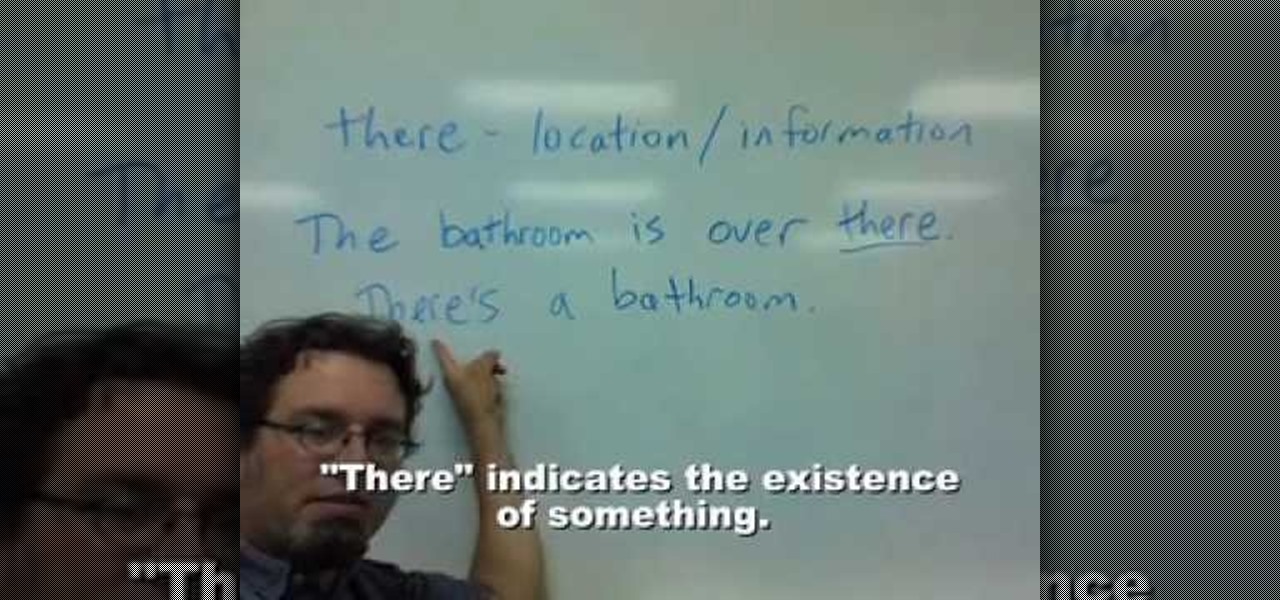
There, their and they're all sound the same. There is for location and information. Their is possessive adjective for they. They're is a contraction for they are. The bathroom is over there give the location of the bathroom. Their is used to show ownership. You can show possession through proper names or by use of the word their. Their house is over there shows the possessive "their" and location "there." They're=they are. They're over there. They're at their house. The words and the meanings...

Paul, an English teacher, gives a lesson on the difference between the word "live" as a verb and as an adjective. To make to "v" sound when saying the word, the lower lip has to touch the teeth. "Live" as verb is an action, so you say "I live in Minneapolis". The singular form is "live," and the plural form is "lives". Live" as an adjective is a describing word, so you say "Live TV is fun". "Live"" as an adjective describes the subject of a sentence. "Live" as an adjective can mean something ...

Learn simple statements in speaking Hindi male/female. Like for male, if you say I walk it would be "main chaltaa hun" in Hindi and "main chaltee hun" for female so main for I chaltaa or chaltee for walk and hun for present tense.
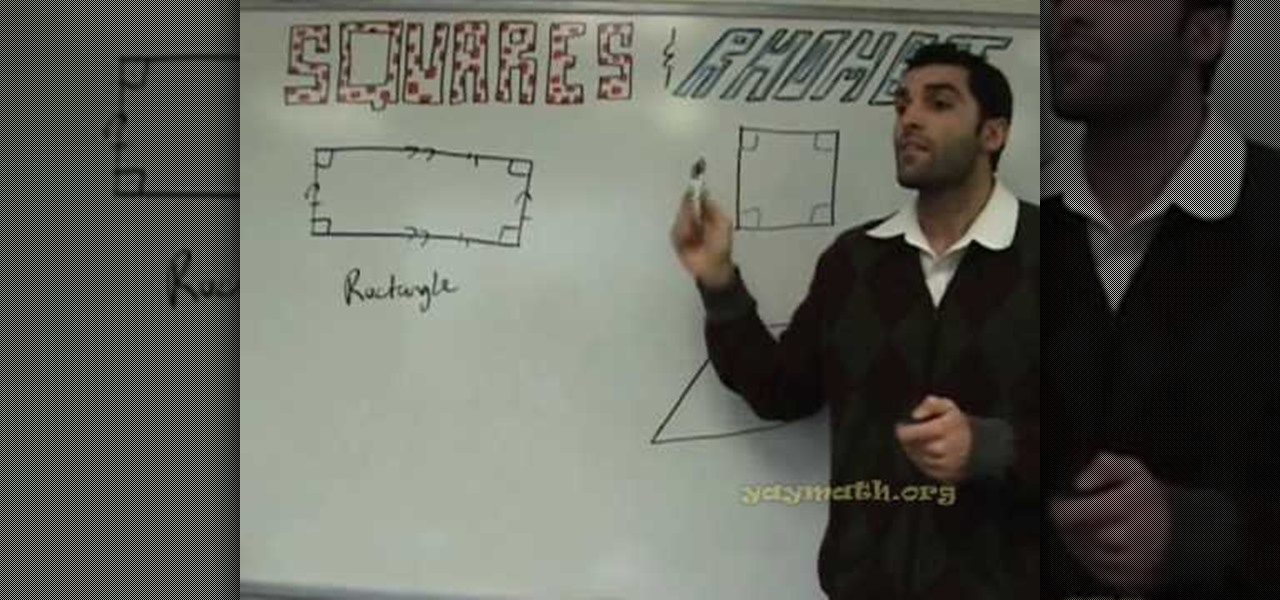
This math lesson from Yay Math covers four-sided shapes in geometry. Learn about the differences and similarities between rectangles, squares and rhombi (the plural of rhombus). The properties of rhombi and squares are covered, so sit back and enjoy this educational (and FUN) math lesson.

Today's word is "alumni". This is a noun and the plural form of "alumnus" which means a graduate of a specific school.

Today's word is "lyrics". This is a noun in its plural form which means words to a song.

Linguist, Bud Brown shares his insights into the personal possessive forms "my" and "your". You gotta know these words and how to use them for everyday conversation for tagalog.

In this French lesson, you'll learn the basic French pronouns. In the French language, pronouns like "I" and "she" are already familiar around the world, but others like "us" or "them" are unknown. Learn all of the following words in French"

In this video, we learn how to speak English: Reported Speech/Reference Words. Reported speech is reporting another person's words or telling what someone else said. Indirect speech doesn't use the use the exact words that we use. Examples of reference words are: her, she, herself, him, and himself. Types of references can be pronouns or possessive adjectives. Listen to who the speaker is so you can change the reference words so that the statement is logical. Use this example as a reference: ...

It’s easy enough to reel in a Sagittarius, but it’s nearly impossible to keep one faithful. Learn how to use astrology advice in dating, by watching this how-to video. Pick up tips on making a relationship with a Sagittarius work. The best advice for dating a Sagittarius is to be a good audience. A Sagittarius loves people who are always willing to be quiet and listen to their problems, and this video also advises you to love the outdoors and work on that non-possessive nature.
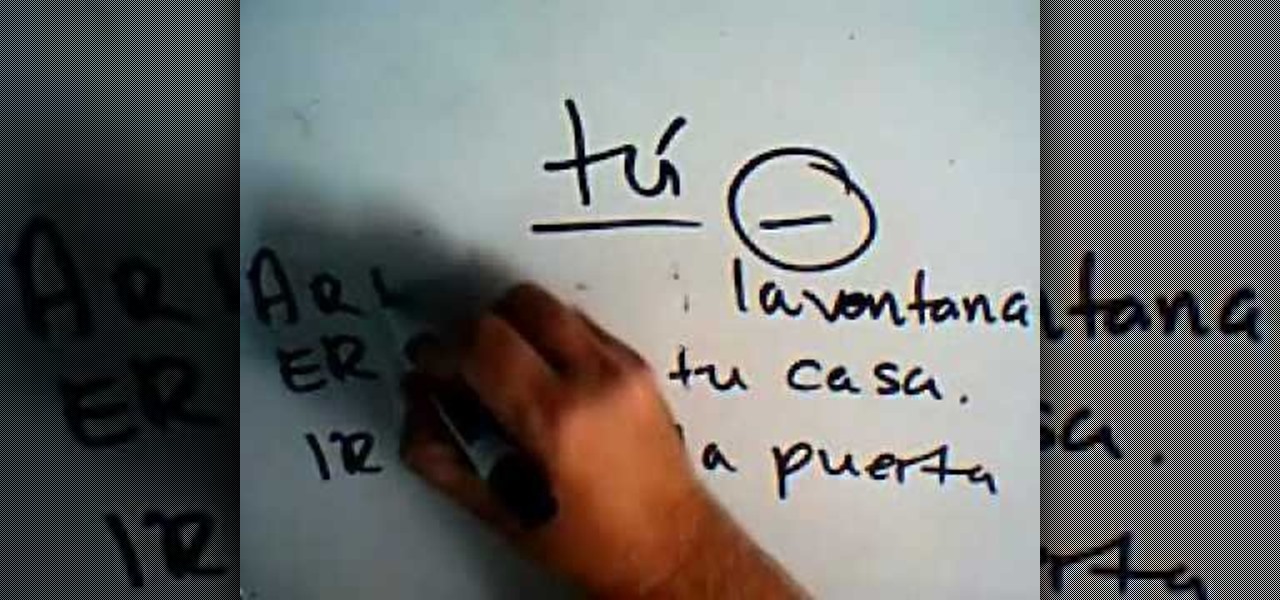
In this video, we learn how to make Informal and formal commands in Spanish. When you speak in first person singular, you will say "yo" when you speak in plural, you will say "nosotros". These are both informal or familiar forms of the word. When you are speaking to someone that is a elder, you will want to speak in formal instead of informal. Use informal mode when you are talking with friends, family, children, and anyone else you talk to in a daily basis. Pay attention if you are talking a...

Mrthoth will show you how to use, count, and mass nouns correctly. Listen to a sample sentence and try to find the grammatical errors in the sentence. A mass noun ca refers to a whole group of objects, for example you would not say a lot of butter you say a lot of butter. A count noun is basically a noun you can count. You can make it plural and you can put a number in front of it. Like you say it was a lot of pencils.
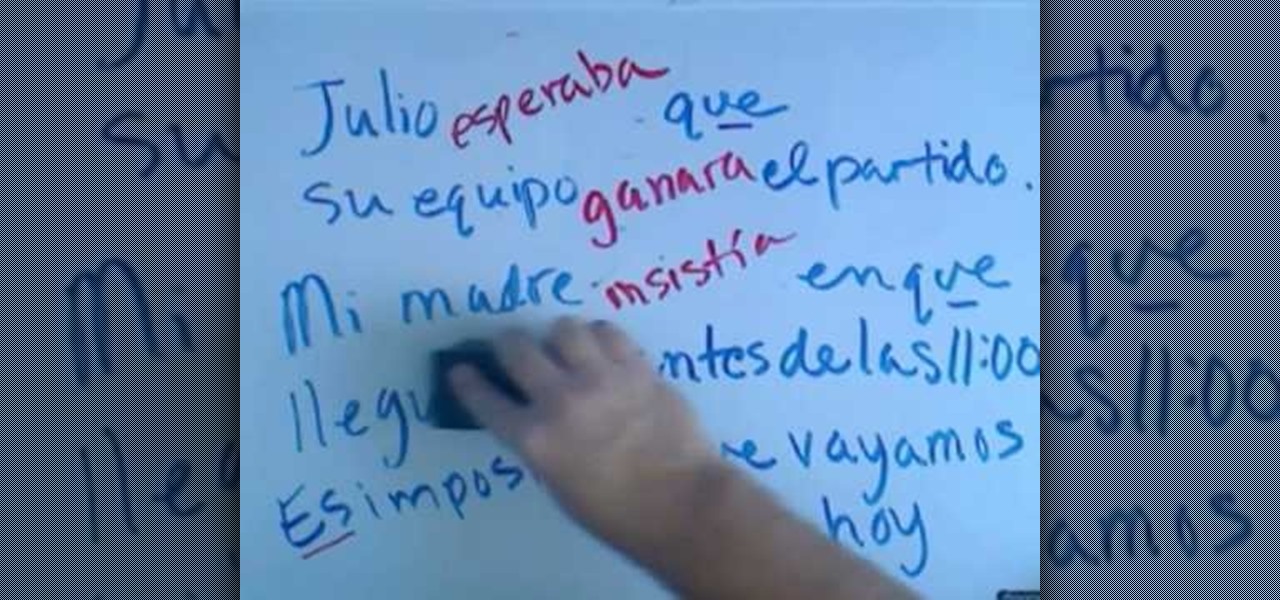
In this video, we learn how to use the imperfect or past subjunctive in Spanish. When you are speaking in first person, you are going to use the singular "yo". If you are speaking in plurals, you will us "os", such as "nosotros". For second person familiar, you will use "tu", then for second person formal you would say "usted". For third person, you will say "el". When you talk in second person familiar and formal you will stress the second syllable in the word. Dissect the sentence to find o...

In this video, we learn how to speak Spanish by using the present tense of AR verbs. For females, "ellas" means they and for males "ellos" means they. To say "you all" you would say "ustedes". For example, the word "trabajar" would knock the "ar" off depending on who was the subject in the sentence. It would be replaced with "o", "as", "a", etc depending on who was being talked about. This goes the same for every verb that ends in "ar". The tense must change when you are talking about singula...

Learn the Dutch alphabet, definite articles, noun plurals, personal pronouns and the verb "to walk" in this 4 part video series.
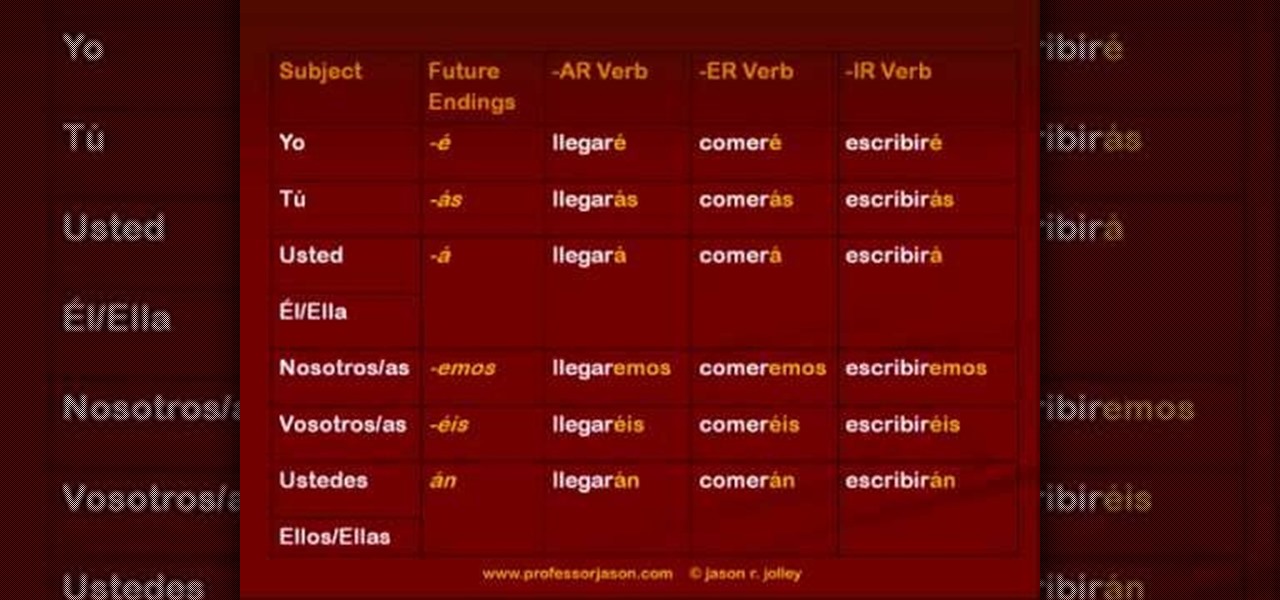
This lively video explains how to discuss future plans in Spanish. Professor Jason explains that it's not that difficult for English people learning Spanish as the same construction is used for 'going to'. There is also a separate future tense, using one set of endings that you simply add to the infinitive, but adding a stress on the final syllable, except for the first person plural. Of course, it's not quite so simple with irregular verbs, which have a special stem which has to be learned b...

In this language tutorial, you will learn how to nominative masculine plural and accusative masculine plural forms in biblical Greek (Koine). This lesson is excellent for scholars wanting to study this ancient language of Greece. Watch this how to video and you will be speaking biblical Greek in no time.

In this language tutorial, you will learn how to determine whether a nouns is dative, locative, instrumental, masculine, singular and plural in biblical, Koine Greek. This lesson is excellent for scholars wanting to study this ancient language of Greece. Watch this how to video and you will be speaking biblical Greek in no time.

Worried your canine might bite somebody? Afraid to take them on walks anymore because of what could happen if a child walks past you? Afraid of a lawsuit? These are the worries associated with overly aggressive dogs. But with proper training, an aggressive dog can be transformed into a well-behaved companion you'll love having at your side.

Steer clear from empty flattery and malicious social engineering with these tips on how to avoid a player.

English can be difficult because few words are spelled phonetically, and every rule has exceptions. But you can become a champ in no time by memorizing a few basic rules.

Check out this episode of Brian Brushwood's Scam School from Revision3 to find out how to pull the best cons, bar scams and magic tricks. It's rare to find a trick that you can actually fool yourself with...and that's exactly what you get with this episode!

ESL teacher Jennifer Lebedev teaches the proper usage of the English verb 'be' in the present tense. The verb 'be' has three forms in the present tense: 'am', 'is', 'are'. Sentences are formed with a subject and a verb. To make sentences with the verb 'be', use the correct form with the subject. Subjects are nouns and pronouns (people, places and things). Use 'am' for the pronoun 'I', e.g. 'I am hungry. 'Use 'is' for singular nouns (one thing) and the pronouns 'he', 'she', 'it', 'this', e.g. ...

Learn how to tell the difference between this, that, these and those in English. "This" is used for something close. "That" is used for something far away. They're both singular. "These" is used for things that are close. "Those" is used for things that are far away. Both words are plural.

In this how to video, you will be introduced to the concept of a movable NU in Greek as well as have the Greek accent marks summarized. The movable NU is used at the end of Greek texts in the present active indicative third person plural form. The movable NU is comparable to the English article "a" or "an". This lesson in perfect for those who wish to study this ancient language of Greece. Watch this language tutorial and you will be speaking biblical Greek in no time.

Welcome back, my greenhorn hackers!

First off, don't be frustrated. YOU CAN DO IT! Contrary to the message in the image above, it's NOT over. It's just beginning. And when it comes to solving the New York Times crossword puzzle, the old cliche does apply: practice makes perfect.

Switching phones has never been easier. Google backs up most of your app data on the cloud, which can then be restored onto your new phone. Sadly, Signal doesn't use this feature since it could compromise your security. Instead, Signal stores encrypted backups locally, requiring a bit of work to restore these messages.

There's a set of drawing tools that have been available for a long time on the iPhone that helps you create handwritten notes and sketches. It's great when you need a free-form way to capture your ideas, and now it's even better. Apple added shape recognition in iOS 14 so that you can now draw geometrically perfect shapes using finger doodles, giving the older shapes tool a run for its money.

A couple of days ago, I had some questions regarding the mighty tentacled beast of our oceans— the octopus. Actually, I was just curious as to what an octopus was, and I found the answer, which was a cephalopod mollusk in the order Octopoda.

A noun is a person, place, thing or idea. There are common, proper, compound, plural, singular, abstract and concrete nouns. This video explains all of them. Help children understand the different type of nouns.

The big day may be over, but the weekend is still full of Thanksgiving spirit. And so is this week's puzzle. But let's keep it short this time, because we should all be taking this time to play a real game of Scrabble with friends and family. I was thinking of making a puzzle about edible birds in general, but practically every bird is edible, meaning there's a lot of avian-related words. Since the turkey is such a big part of Thanksgiving, let's just stick to that...

In these weekly Scrabble Challenges, so far we've covered two-letter words, double bingos, high scoring moves, triple-triples, last moves, parallel plays, phoneys and opening moves. For this week's puzzle, we're revisiting the strategy for opening moves.

You've probably heard about Rep. Greg Walden (R-WA) tweeting in Morse code back in December. .-- .. .-.. .-.. / -.-. .... .- .. .-. / -.-. --- -- -- / .- -. -.. / - . -.-. .... / ... ..- -... / --... ...-- ... / .-- --... . --.- ..

ClariTrans is a requester on MTurk (www.mturk.com) they pay very well for transcribing short snippets of audio. Here is how you can transcribe their audio snippets properly to ensure your text will be approved and you will be paid: